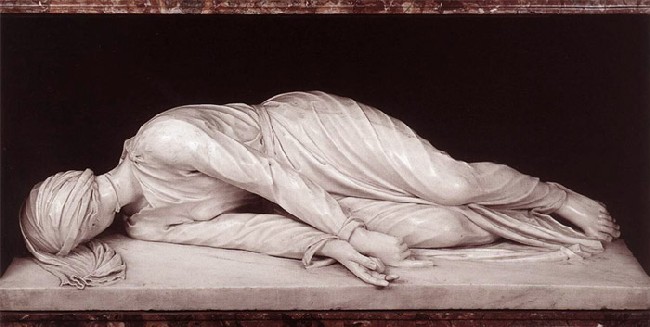The Annunciation
[Click picture to enlarge]
I am preparing for an annual oblate retreat by focusing on beauty. I hope it will help fix my attention on peace and truth — two of beauty’s closest companions.
Recently, I came across Henry Ossawa Tanner's “The Annunciation.”
I do not know any of the most famous Annunciation works, either painting or sculpture, so I do not know where Tanner’s 1898 version ranks with art experts, but it has made a lasting impression on me. I am like the person on a Catholic message board who posted the painting and then said that, she/he could not think about the annunciation without Tanner’s painting of the scene coming to mind.
I began to read up on Tanner and discovered that Tanner was the most famous artist of African descent in the last part of the 19th and early part of the 20th centuries. He was a member of the realist school and is known for his religious paintings.
He was the son of an affluent African Methodist Episcopal minister and was born in Pittsburgh, in the state of Pennsylvania, USA, but moved to Philadelphia, Pennsylvania when he was 9.
His middle name is from Ossawatomie, the nickname of abolitionist John Brown.
Tanner received a good education in art at the Pennsylvania Academy of Fine Art. And "The Annunciation" is housed at the Philadelphia Museum of Art, Philadelphia, Pennsylvania, USA.
Tanner spent most of his adult life living in Europe where he became recognized internationally for his religious paintings.
Tanner’s wife was the model for Mary in “The Annunciation.”
I was glad that I read about this artist I had never heard of before. "The Annunciation" took on more significance for me when I learned about the artist and the model.
In my reading of Internet resources about Tanner and “The Annunciation,” I eventually stumbled across a meditation poem someone had written about the painting. The poem is published in “America,” (National Catholic Weekly), March 31, 2008 edition:
“Yet you do not blink.
In the intimacy of a bedchamber
Your soul is awakened from sleep,
Fragile flesh before angelic brilliance.
Your rumpled night sheets tossed aside,
You listen in peace with your whole self
To the question that will define history.
Holding its breath for your answer,
All heaven pauses.
“LET IT BE DONE TO ME…”
Here it begins.
In such utter simplicity,
In quiet strength, at the appointed hour,
With the rippled rungs of time at your feet,
And the broad lines of history at your back.
At the balance of His grace in your will,
Eve reborn, humanity to be redeemed
Through a child, from a virgin
Whose name is Mary.”
That poem was just what I needed to help me prepare for my oblate retreat. And there it is in the poem too — the themes of Peace and Truth.
After I read the poem, I read who wrote it — J. Michael Sparough, S.J., who is director of Charis Ministries, a center for retreats and spiritual direction for young adults in the Chicago area. So, the author of the poem is a director of — Retreats — how fitting.
_________________________________
Sources
A good overview of Tanner's works and life
A short summary of Tanner's Life
Overview of some of Tanner's other works
_________________________________
Additional Note:
I told my wife about this blog and she said, let me show you something. She went to one of our china cabinets and pulled out a plate that she had purchased before we were married — it’s of the annunciation — not Tanner’s, but by another artist. What is surprising is that from the time before we were married I had no religious art and she had purchased only two items, and one was of the annunciation. In 1988 she bought an Eve Licea plate of the Annunciation [web site of company]. She said she fell in love with the beauty of the picture and bought it as her first piece of religious art. Picture of the Annunciation plate
About 8 years later she bought a copy of Luc Olivier Merson’s “Rest on the Flight into Egypt,” 1879.
“Rest on the Flight into Egypt” and a commentary on the painting by Kate Benedict.










No comments:
Post a Comment